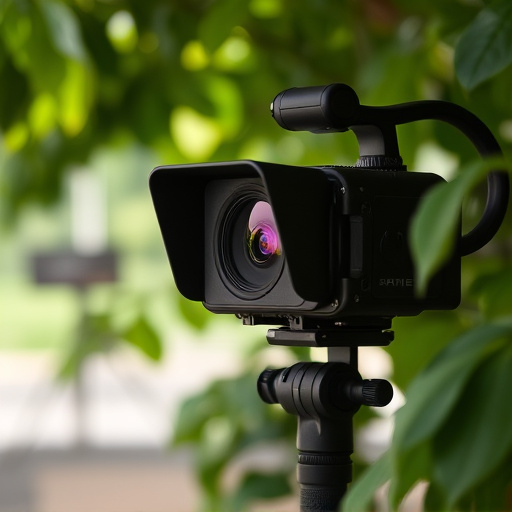In today's digital era, ensuring privacy in short-term rentals like Airbnb is crucial. By employing tools such as RF detectors, thermal imaging cameras, and audio analyzers, tenants and property managers can uncover hidden microphones and spy cameras. A multi-step process includes visual inspections, using flashlights, and advanced techniques with specialized devices to detect unusual radio signals and heat signatures. If suspicious devices are found, take immediate steps for privacy protection, including power cycling devices, conducting thorough visual checks, changing passwords, updating firmware, and contacting Airbnb and law enforcement.
Uncover the hidden dangers of your home with our comprehensive guide to microphone bug sweeping detection. Learn effective techniques and essential tools for identifying covert listening devices, especially crucial for short-term rentals like Airbnb. We demystify the process, from understanding basic equipment to advanced methods for thorough inspections. By mastering these skills, you’ll ensure your privacy is protected and gain peace of mind in any space.
- Understanding Microphone Bug Sweeping: Tools and Equipment
- Detecting Hidden Microphones: Techniques for Home Inspection
- Protecting Your Privacy: Steps to Take After Finding a Spy Camera
Understanding Microphone Bug Sweeping: Tools and Equipment
Microphone bug sweeping, also known as audio surveillance detection, is a critical process for identifying hidden microphones and spy cameras in homes, especially in popular short-term rental platforms like Airbnb. Understanding the tools and equipment used in this technique is essential for both tenants and property managers to ensure privacy and security.
Professionals employ specialized devices, such as radio frequency (RF) detectors, thermal imaging cameras, and audio analyzers, to locate hidden microphones. RF detectors can pick up on signals emitted by covert listening devices, while thermal imaging cameras help visualize any unusual temperature variations indicative of hidden cameras. Audio analyzers, on the other hand, are designed to detect subtle sound patterns that might suggest the presence of a listening bug. These tools enable thorough inspections, allowing users to identify and mitigate potential security breaches effectively. By learning how to spot spy cameras Airbnb hosts can take proactive measures to safeguard their properties and guests’ privacy.
Detecting Hidden Microphones: Techniques for Home Inspection
Detecting hidden microphones, often referred to as spy cameras in homes, requires a meticulous approach and the right tools. The first step is to conduct a visual inspection, looking for any suspicious devices or unusual hardware that might be attached to walls, ceilings, or furniture. Pay close attention to areas like windowsills, door frames, and corners, where micro-cameras are commonly placed. Use your phone’s flashlight feature to better illuminate these areas during the inspection.
For a more thorough check, employ specialized bug sweeping equipment such as RF (radio frequency) detectors, which can identify signals from hidden microphones or wireless cameras. These devices emit alerts when they detect unusual radio frequencies, helping you pinpoint potential spy cameras, especially in the context of renting out properties like Airbnbs. Additionally, thermal imaging cameras are valuable tools for identifying heat signatures that may indicate the presence of hidden devices, as electronic components often produce distinct temperature patterns.
Protecting Your Privacy: Steps to Take After Finding a Spy Camera
If you suspect a spy camera in your Airbnb or home, privacy protection is paramount. The first step is to immediately power off and unplug all devices, especially those with cameras or microphones. Then, conduct a thorough visual inspection, checking for any suspicious hardware or unusual equipment. Look for small, hidden cameras or micro-recorders, which could be disguised as everyday items like smoke detectors, light switches, or even decorative objects.
Once you’ve identified potential spy devices, secure the area to prevent unauthorized access. Change your Wi-Fi passwords and update all router settings. Update firmware on smart home devices and consider installing a new security system with enhanced privacy features. It’s crucial to inform both Airbnb and local law enforcement about the discovery, as they can provide further guidance and investigate potential violations of privacy laws.
In today’s digital age, understanding how to spot spy cameras is crucial for maintaining privacy in your home, especially when renting through platforms like Airbnb. By familiarizing yourself with microphone bug sweeping detection techniques, you can ensure a safer and more secure living environment. Regular inspections using specialized tools and equipment, combined with knowledge of hidden camera locations, empower individuals to protect their personal spaces and peace of mind. Remember that being proactive in these measures is key to safeguarding your privacy.
